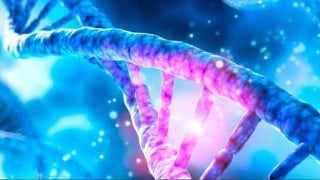Biology – Biomolecule
Learn how to analyze the chemical composition of living organisms and understand the primary and secondary metabolites, biomacromolecules, and enzymes involved. This course is perfect for biology enthusiasts, beginners in biology, and those preparing for board and competitive exams. Suitable for NEET, MHT-CET, state board, CBSE, ICSE, IGCSE, and NEET exams.
What you’ll learn
- How to Analyse Chemical Composition?
- Primary and Secondary Metabolites
- Biomacromolecules
- Proteins
- Polysaccharides
- Nucleic Acids
- Structure of Proteins
- Nature of Bond Linking Monomers in a Polymer
- Dynamic State of Body Constituents – Concept of Metabolism
- Metabolic Basis for Living
- The Living State
- Enzymes
Show moreShow less
SUMMARY
Although there is a bewildering diversity of living organisms, their chemical composition and metabolic reactions appear to be remarkably similar. The elemental composition of living tissues and non-living matter appear also to be similar when analysed qualitatively. However, a closer examination reveals that the relative abundance of carbon, hydrogen and oxygen is higher in living systems when compared to inanimate matter. The most abundant chemical in living organisms is water. There are thousands of small molecular weight (<1000 Da) biomolecules. Amino acids, monosaccharide and disaccharide sugars, fatty acids, glycerol, nucleotides, nucleosides and nitrogen bases are some of the organic compounds seen in living organisms. There are 20 types of amino acids and 5 types of nucleotides. Fats and oils are glycerides in which fatty acids are esterified to glycerol. Phospholipids contain, in addition, a phosphorylated nitrogenous compound.
Only three types of macromolecules, i.e., proteins, nucleic acids and polysaccharides are found in living systems. Lipids, because of their association with membranes separate in the macromolecular fraction. Biomacromolecules are polymers. They are made of building blocks which are different. Proteins are heteropolymers made of amino acids. Nucleic acids (RNA and DNA) are composed of nucleotides. Biomacromolecules have a hierarchy of structures – primary, secondary, tertiary and quaternary. Nucleic acids serve as genetic material. Polysaccharides are components of cell wall in plants, fungi and also of the exoskeleton of arthropods. They also are storage forms of energy (e.g., starch and glycogen). Proteins serve a variety of cellular functions. Many of them are enzymes, some are antibodies, some are receptors, some are hormones and some others are structural proteins. Collagen is the most abundant protein in animal world and Ribulose bisphosphate Carboxylase-Oxygenase (RuBisCO) is the most abundant protein in the whole of the biosphere.
Enzymes are proteins which catalyse biochemical reactions in the cells. Ribozymes are nucleic acids with catalytic power. Proteinaceous enzymes exhibit substrate specificity, require optimum temperature and pH for maximal activity. They are denatured at high temperatures. Enzymes lower activation energy of reactions and enhance greatly the rate of the reactions. Nucleic acids carry hereditary information and are passed on from parental generation to progeny.
Who this course is for:
- Biology enthusiast
- Beginners in Biology
- NEET & MHT-CET aspirants
- Those preparing for board and competitive exams State Board, CBSE, ICSE , IGCSE, MHT-CET & NEET







There are no reviews yet.